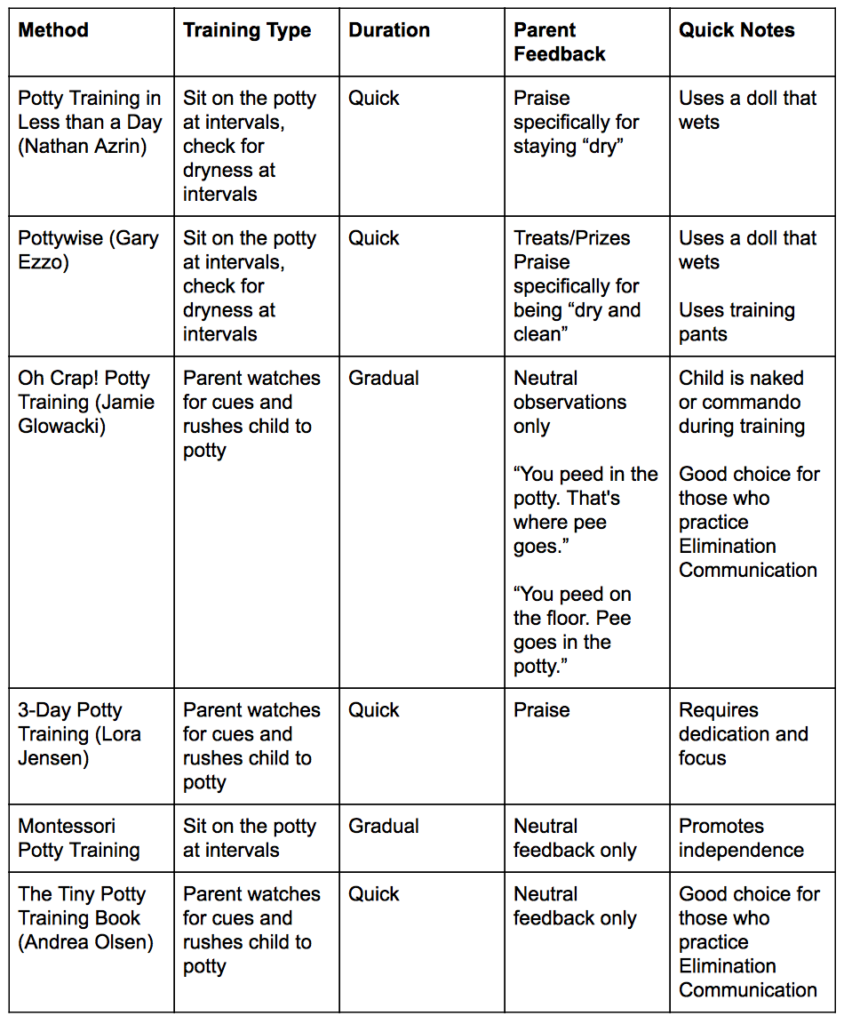 Potty training can be a daunting task. When to start? How to do it? If you’re feeling overwhelmed by all the potty training information out there, fear no more. I read everything I could find on the topic and summarized it for you! Here we go. . .
Potty training can be a daunting task. When to start? How to do it? If you’re feeling overwhelmed by all the potty training information out there, fear no more. I read everything I could find on the topic and summarized it for you! Here we go. . .
When Should I Start?
The American Academy of Pediatrics states that children as young as 18 months can be potty trained, but recommends waiting until age 2. More importantly, you want to wait until your child shows readiness. Signs of readiness include the ability to dress and undress, ability to follow directions, and the desire to imitate adults and use the toilet or wear underwear. Developmental readiness carries more importance than chronological age.
What Do I Need?
All you need is a potty chair and some cleaning supplies. A possible alternative to the potty chair is a seat reducer, which you place atop your toilet. However, the time it takes to set up is less productive when you are potty training. It’s easier for the child to independently use a potty chair, and the chair can be moved room to room, or even taken on outings. Depending on your method, you may use training pants, which are absorbent underwear. Training pants allow the feeling of wetness that a diaper doesn’t, but minimize the mess from accidents.
No-nos
It’s vital that you never use punishment while potty training. Coercion and bribing your child should also be avoided.
Which Method to Use?
There are plenty of potty training methods out there, and it’s most important to find one that works for your child and your parenting style. You need to consider two things here: a training style and a method for motivating your little one.
First, consider a gradual versus a quick method. Gradual methods can have less pressure associated with them, but an older child will handle a quicker method better.
Second, decide whether you’ll place your child on the potty at specific intervals, or watch for signs and then move your child to the potty. Intervals can help minimize messes, but watching for signs can help the child associate the need to go with the act of going to the toilet.
Lastly, think about the kind of positive reinforcement you want to use. Rewards, like candy or stickers, tend to work quickly. Verbal praise is an alternative to physical rewards. Some parents prefer to make neutral observations, for example, “You peed in the potty,” in a nonjudgmental (neither excited nor disappointed) tone. This all depends on the parenting style you’re comfortable with.
After you’ve thought it through, this chart will help you narrow down which method or methods to research further:

Consistency is Key
No matter which process you select, consistency is key. Stick to the principles of the method you’ve chosen, and don’t jump around. I know it seems impossible, but just keep reminding yourself that we all got there! So will your little one.





















